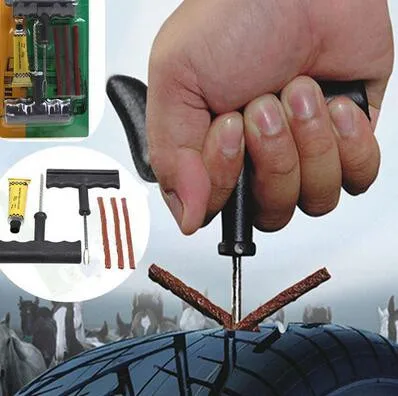Tire plugging is the fastest method to repair a punctured car. Tire plugging uses a cord to prevent the airhead from escaping. If you are an experienced person, you can avoid damage to your car with simple tips.
So, how long does a tire plug last? Most manufacturers say that plug versions can last 7-10 years if installed correctly.
Yet, this number is meant as a reference because you can’t always fix it perfectly. The article gathers useful knowledge and some of the most frequently asked questions about tire plugs. Let’s scroll down to read more information!
Buy Best Tire Repair Kits at Amazon.com
What Is A Tire Plug?It is the primary tool in the repair by plugging method. From the outside, it looks like a standard wire, and the structure is quite remarkable; it is a sticky object; depending on the case, the item can expand or contract to match the size of the hole.
Its working principle is also quite simple: after being inserted into the tire, the plug wire will sense the pressure, determine the shape of the wound, and then automatically expand to adapt.
In addition, the material that makes the wire must be guaranteed to meet the standards, confirming the certainty so that after the air is pumped in, there will be no problems.
There is no denying the convenience that the plug method brings, and you can even repair it without removing the tire from the rim. You can even plug in the tire in some exceptional cases, even when the wheels are connected.
How Long Does A Tire Plug Last?When a vehicle is repaired correctly and maintained, a plug’s life span can last up to 7-10 years. It is an unbelievable number for a wheel that has been repairable.
However, manufacturers advise users not to overdo patching like this in practice. When using too many repair measures, the impact will affect the inherent functions, causing deflation and explosion.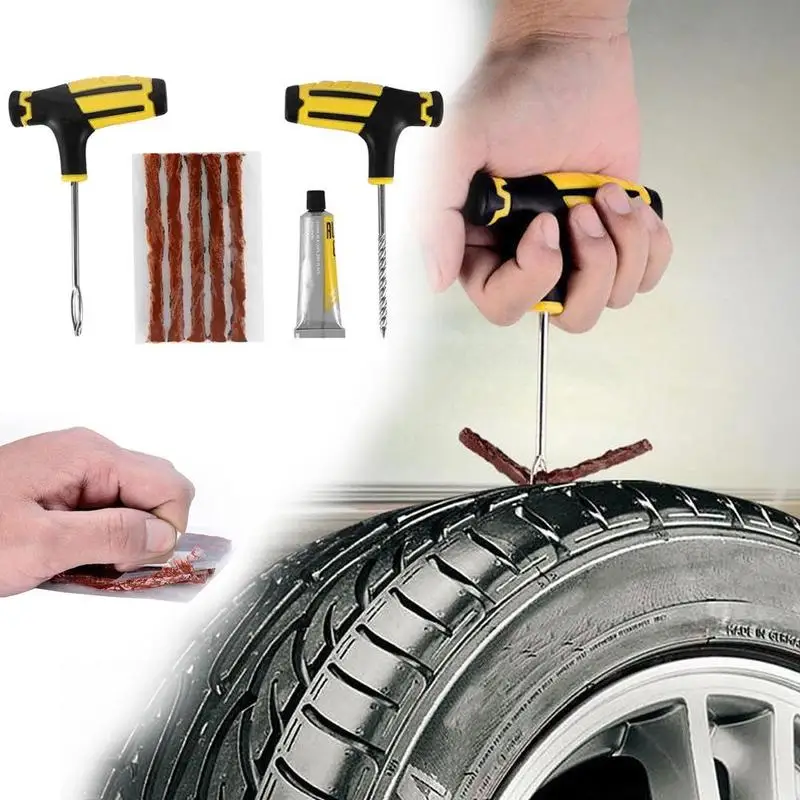
When traveling on the road, the car’s wheels have problems, do not rush to decide when the experience is not proficient; the best way is to take the car to a repair center to have expert advice on the appropriate repair method.
Is Plugging A Tire A Good Idea?Buy Best Tire Repair Kits at Amazon.com
Plugging or patching is only a temporary measure before you have enough time to change into a new tire. The life of a tire after plugging can last from 7-10 years or 25,000 miles; no one can be sure that there will not be any problems.
Plugging in tires will be a good idea, even effective if the wheel is in an emergency that needs to be moved.
Is It Safe To Plug In A Tire?You can safely use your plugged-in tires when traveling in a specific section of the road. Unlike a spare tire, which has a short life, it is possible to prevent air from escaping through a previous puncture completely with a plug repair method.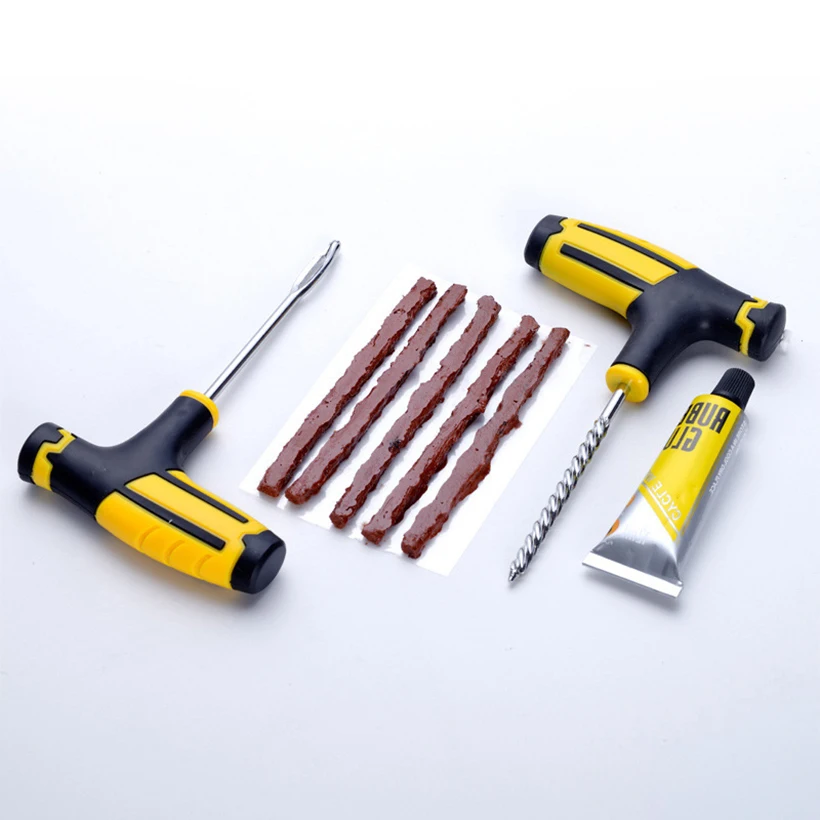
Via many surveys, experts think there is a better measure than a plug – radial patch. It is a suitable method available on almost all popular tires on the market.
The process takes about 30 minutes while using a wire to insert the air hole takes up a few minutes. Both must be vulcanized to reinforce and increase the rubber surface’s certainty.
Is It Ok To Drive On A Plugged Tire?As long as the wound has adequately been reinforced, you are entirely safe traveling by car with tires. The safest time to use is not too long from when you repair using the above method.
Besides, some notes have also ensured stability when operating this type.
However, do not drive when there is a wound near the wall or on the side of the wheel; if the plug diameter exceeds ¼ inch, it is best to replace the tires.
Finally, the body’s weight, do not use plug tires to carry heavy objects; this inadvertently puts pressure on the wheels when the tires are weak.
Here are some ways to help you better understand the plugging process.
Step 1: Locate the leakThis step does not require you to remove the wheel altogether, but you can use a jack to support the wheel’s weight, so it is pretty easy to do the following steps.
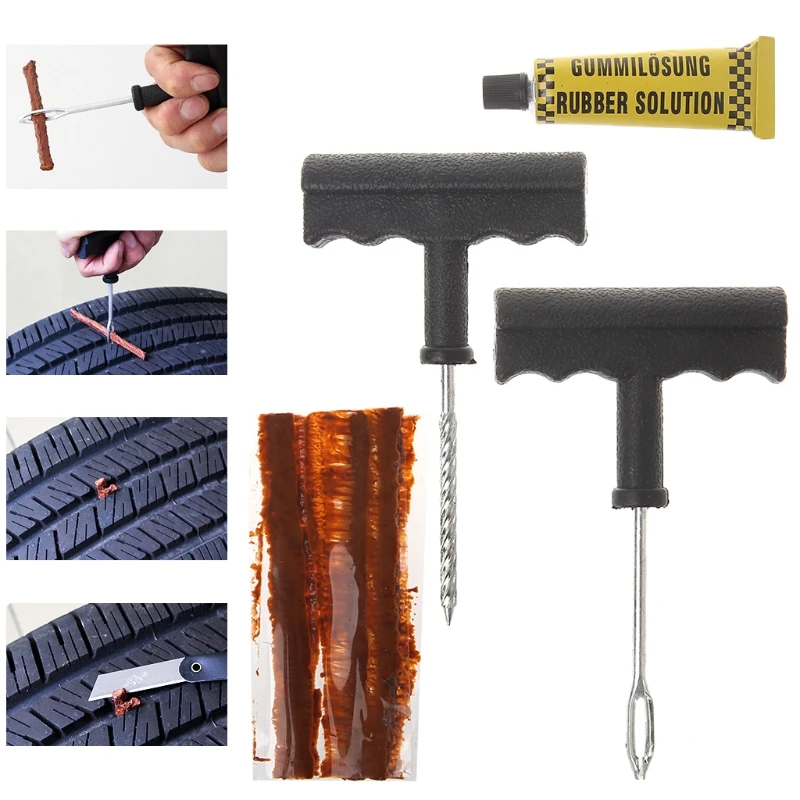

The above article has provided you with knowledge related to plugging or manipulations to perform this process. Hopefully, it will help you when you encounter a similar situation.
This post was last updated onA punctured tire while in traffic is an annoying thing. Each case will have different treatment methods. However, users choose the technique of plugging or patching that is the most popular because it helps to completely overcome the situation of a punctured tire quickly and saves money.
Each case will have different treatment methods. However, users choose the technique of plugging or patching that is the most popular because it helps to completely overcome the situation of a punctured tire quickly and saves money.
So, is plugging a tire safe? This measure is only a temporary fix, and it will not be safe on a long road. But, it’s possible for you to try to stay on the short one.
Scroll down, and learn more about this topic in the article below.
Is Plugging A Tire Safe?The tire plug method has been confirmed by experts to be effective.
The working principle is to use a specialized wire to seal the vent hole. The particular substances in the cord are solid, and they can automatically contract or expand very quickly, a way that helps to adapt to any shape of the hole.
However, this fix is not recommended by many people. Why?
Manufacturers only recommend using the plug cord as a temporary solution despite the miraculous effect before taking long-term repair measures.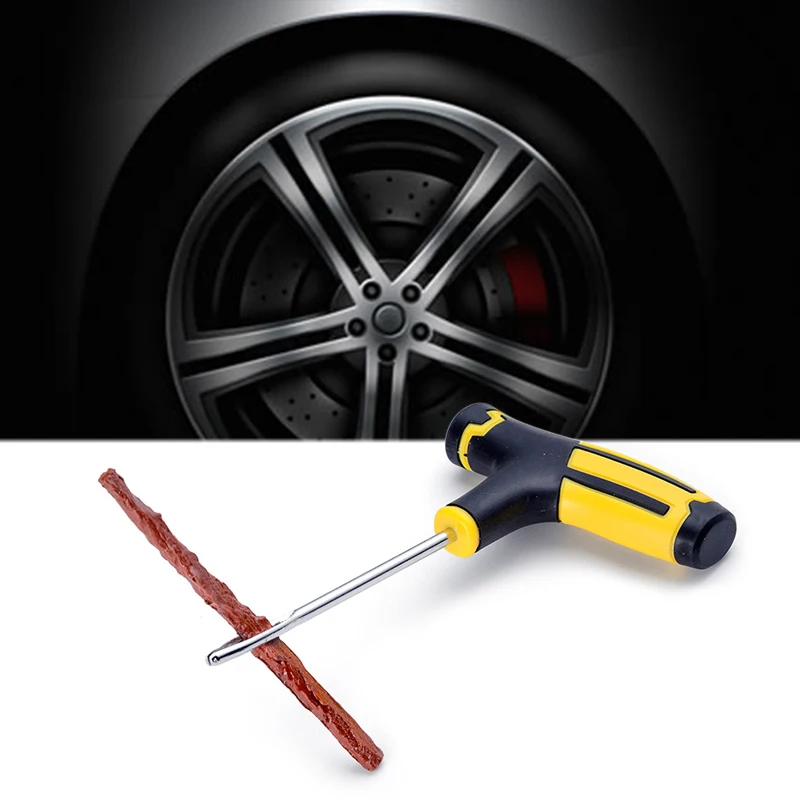 The reason comes from the objectivity of the items; they have shown that many potential dangers surround the problem.
The reason comes from the objectivity of the items; they have shown that many potential dangers surround the problem.
Specifically, environmental influences such as air and moisture will penetrate the body to degrade and destroy the wheel structure, causing dangers.
Over time, by the state of corrosion that will weaken the steel wheel belt, the rubber tires bonded to increase impact. Another risk when repairing a puncture with a plug is damage to the inner wheel body. You can’t tell what damage is there with the naked eye.
But you absolutely should not confuse effectiveness with risk. It is pretty safe for you to use a plug to repair a punctured tire if you are moving the vehicle for a short distance. Consequences and risks are situations that occur in the future.
What To Do When You Have A Flat Tire?There are many definite causes of tire damage, including hitting sharp objects, worn tires. If you maintain the condition above the pressure, it may cause the tire to fail. If the vehicle cannot be repairable immediately, use the measures:
If the vehicle cannot be repairable immediately, use the measures:
It will be pretty convenient if you have experience in the profession. The process is quite simple:
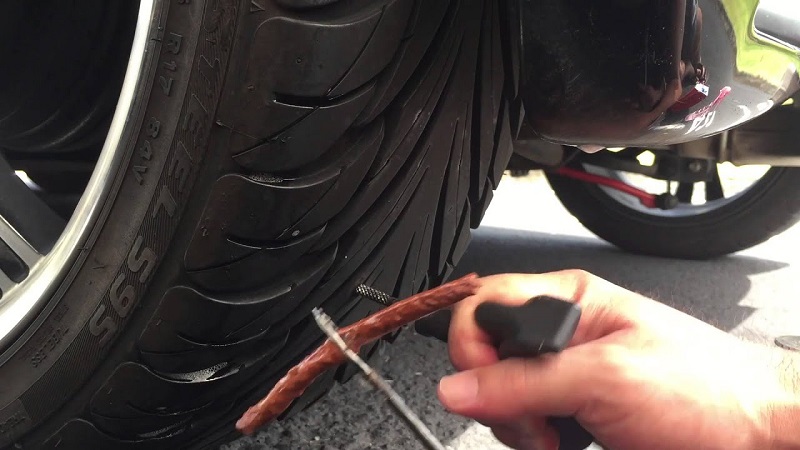
For detailed guides, check out this video below:
It is a temporary solution. If you want to use it for a long time, regularly check the quality of the tires to control the condition the wheel is having.
Replace your tiresThe second way to repair a wheel is to get a new one. It is a great solution, ensuring the safest for you. Although the money you have to spend is quite expensive, it comes with a guarantee of the features of a wide tire, minimizing the risks you are facing.
No, we’ve emphasized quite a few times that a plug is only a temporary solution before you can change the wheel or have a more permanent fix.
It would help if you understood that the vent plug is designed for temporary use only, as it tends to leak over time, releasing the air through the hole when traveling at high speeds.
Besides, the plug wire can be soaked in water, rusting and damaging the entire wheel structure.
When Should You Not Plug A Tire?The cases in which you should not plug the models are as follows:
Patches are often more effective than plugs, at least in timing.
A plugged-in model is only safe to travel for 8 miles so that you can move the car farther, longer with the patch repair option.
Patches are usually less affected by the environment, so the life of a punctured one when patched can be up to 7-10 years with careful maintenance.
How Long Do You Wait After Plugging In The Model?You need to wait more than 5 minutes. When the adhesives are completely dry, the plug is firmly fixed at the mouth of the hole to ensure that water and moisture cannot penetrate so that you can drive with peace of mind.
ConclusionIn this article, we have presented the knowledge related to car repair with the tire plug method. We hope to help you when encountering this situation.
Thank you, and see you in our next update!
This post was last updated onLow voltage power distribution
Building automation and security
Medium voltage distribution and power automation
Backup power and cooling systems
Electrical installation equipment and home control systems
Automation and industrial control
Solar energy
Series: 65
Series: 25
Series: 22
Series: 25
Series: 11
Series: 46
Series: 26
Series: 1
Series: 35
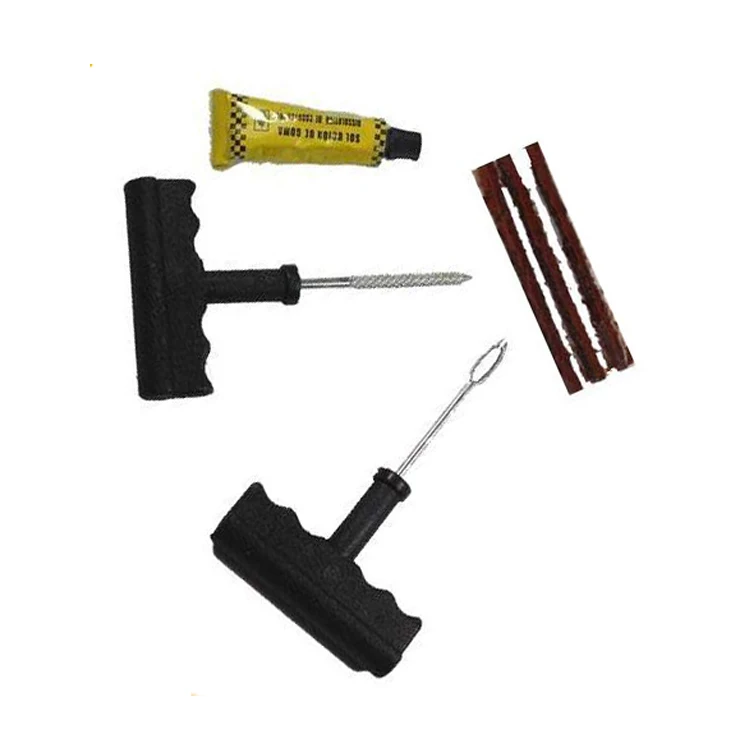 Types and causes of tire wear - an article from the company "SHINOavtoSERVICE"
Types and causes of tire wear - an article from the company "SHINOavtoSERVICE" With mileage, the technical condition of tires changes, which affects the performance of the car and traffic safety. Therefore, it is important to monitor the uniformity of wear of all tires, and also to prevent the operation of the vehicle, the residual height of the tire tread of which is lower than the minimum allowable. The task of preventing premature wear and destruction of tires is very complex and is associated with the ability to determine their types, accurately identify the cause that caused each specific tire failure. The increased wear of your car tires is influenced by many factors, or, to put it bluntly, violations. The fact is that many car owners do not follow the basic rules for maintaining their own or working car.
This happens either due to ignorance or negligence. Due to the periodic and timely inspection of car tires, you can get complete and necessary information about the condition of the wheels and tires, the degree of wear, identify defects that are dangerous for traffic safety, determine the causes of tire wear and the features of car operation.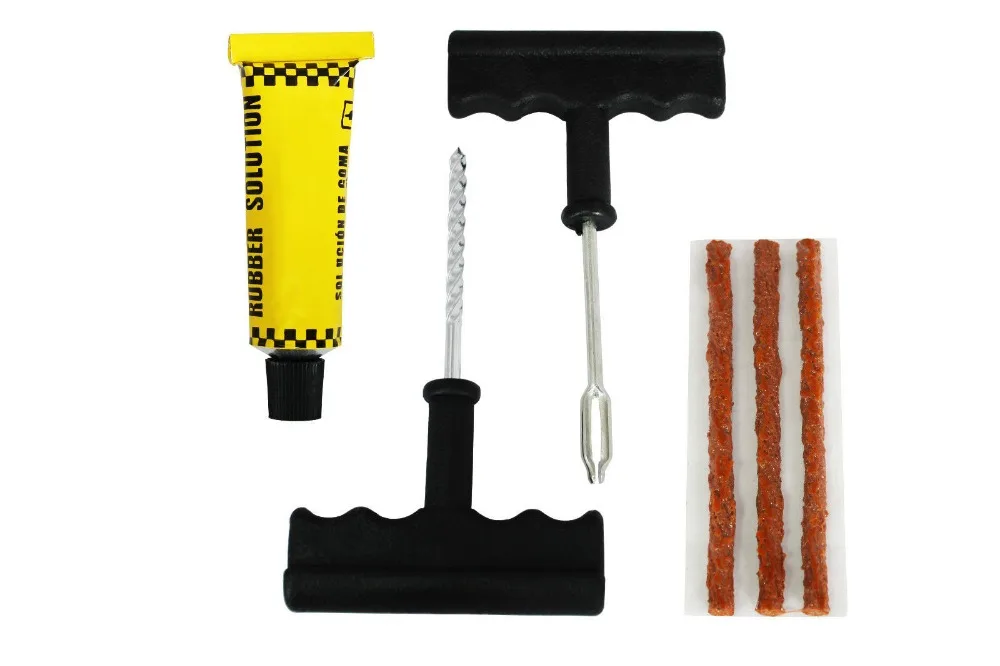
In addition to safety, tire condition affects handling, driving dynamics and fuel consumption . The latter is especially important for trucks and car owners with high daily mileage. Some tire manufacturers claim in their flyers that their tires will not only last longer, but will also save fuel. Let's see how tires really affect a car's fuel consumption. In a truck, this is of course more noticeable than in a passenger car, due to the large number of wheels and high loads. The rolling resistance of an entire vehicle consists of a whole list of resistances: air resistance, overcoming inertia forces during acceleration, internal resistance of engine and transmission components, and tire resistance. We will not dwell on all these factors and focus on tires.
The total rolling resistance of tires is also made up of several components. Contrary to popular belief, tire friction on the road surface of is only 5%. A little more (about 15%) falls on air resistance .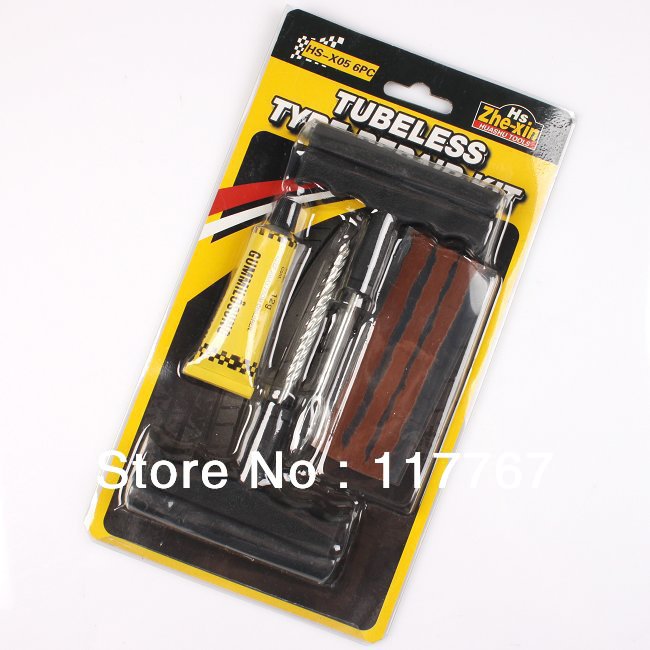 The lion's share of the energy expended (about 80%) is spent on tire deformation . If the tire is rolled along the road with no load at all, then before stopping, it will move for a long time. But if the tire is loaded so that its lower part begins to deform (compress), after the initial impulse it will stop very quickly. This clearly demonstrates how much energy is spent on the constant deformation of the tires.
The lion's share of the energy expended (about 80%) is spent on tire deformation . If the tire is rolled along the road with no load at all, then before stopping, it will move for a long time. But if the tire is loaded so that its lower part begins to deform (compress), after the initial impulse it will stop very quickly. This clearly demonstrates how much energy is spent on the constant deformation of the tires.
Thus, car owners may want to buy tires that will deform minimally, and therefore create less rolling resistance. Now in the market such an option is quite possible to find. As a rule, these are inexpensive budget-class tires. A stiffer carcass, although it gives some fuel economy, at the same time can present an unpleasant surprise in the form of a tire explosion. You just need to run into any object with sharp edges (stone, piece of iron, etc.). By the way, a similar situation can happen with premium tires. Some drivers, mostly trucks, inflate their tires on purpose to save fuel, without realizing that uneven wear will appear.
The chassis geometry of the also has a significant impact on fuel consumption. Even minor deviations entail extra costs. Firstly, tires wear out faster, and secondly, fuel burns more. When the wheels, figuratively speaking, go in different directions, additional energy is spent on their "drag". For example, if at one meter the wheel “leaves” only 2.5 mm, then at a kilometer it turns out that the wheel will “drag” to the side by 2.5 m. 2.5 kilometers at full load.
Normal tire wear
Tire inspection provides you with information about the condition of the tires and wheels, how the vehicle is used, possible defects, and driving style. So, for example, a sporty driving style leads to a different tire wear pattern than a quiet one. For a correct assessment, it is necessary to inspect all the wheels. This is especially evident in the example of a passenger rear-wheel drive car, since the load is distributed differently between the driving and steered wheels in it.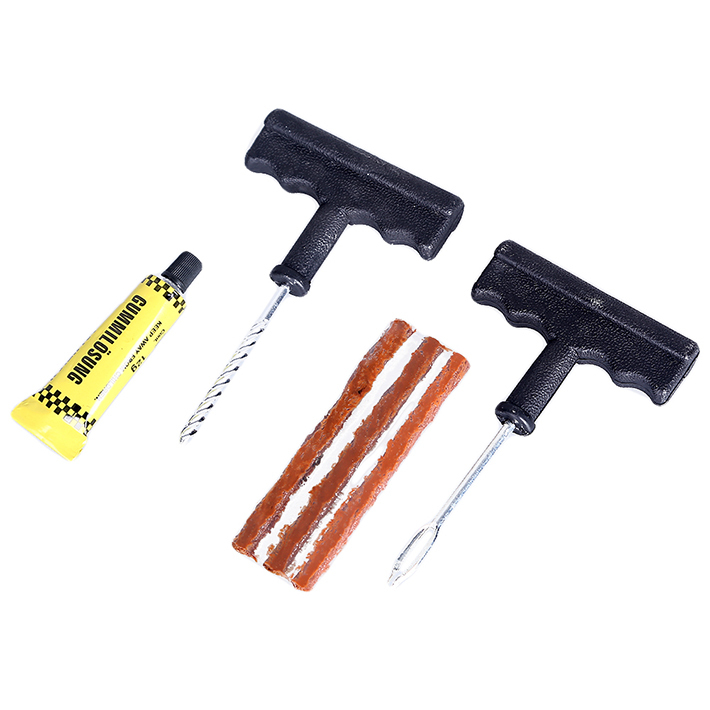
Tire wear as a function of air temperature
Tire wear as a function of driving speed
While driving, tire wear is determined by measuring the remaining tread height. Tire wear must be uniform over the entire circumference; when the minimum tread height is reached, the tire is considered completely worn out and must be replaced. Tire wear is primarily determined by driving style. Hard acceleration and braking wears out the tire faster than steady motion.
Drive and steer wheels have different wear patterns due to different loads. Steered wheels wear more on the sides, since it is on this part of the tire that the main load in the turn occurs. The tires on the drive wheels wear more in the middle , since it is this part of the tire that contacts the asphalt and transmits the rotation of the wheel to the road. On vehicles with front-wheel drive, the wear is "cumulative" - in this case, the entire tire wears out evenly and its central part and sides.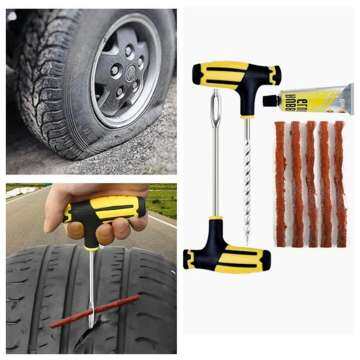
One-sided wear (possible reduction in wear from 15% to 30%) - occurs more often than others, since there are several reasons for its occurrence. One-sided tire wear can be caused by an error in suspension geometry. To determine the cause in this case, it is necessary to check the toe-in and camber. Wear on the outer side of the tire can be caused by excessive positive toe or camber . Wear on the inside of the tire, on the other hand, causes excessive negative toe or camber. Driving with zero camber results in even but increased tire wear. In addition, it increases the tire's rolling resistance and increases fuel consumption . In addition to the tires of the steered axle, tires of other axles can also be subject to one-sided wear - again due to problems with the geometry. This is either a lack of alignment, or deformation of the axes themselves. On steering tires for tractors, one-sided wear may appear due to the operating conditions of the vehicle.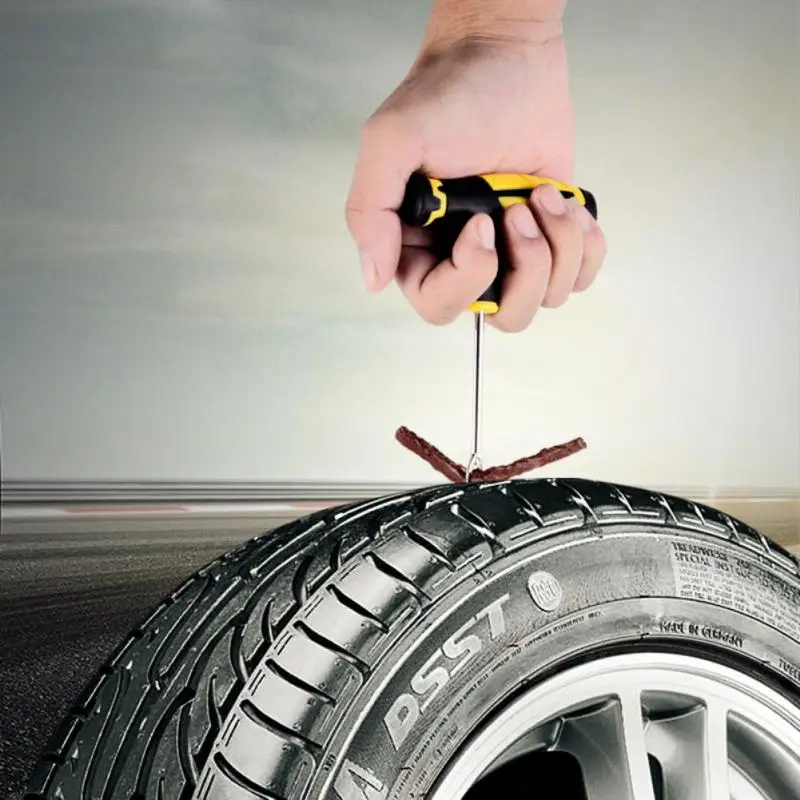 Another reason is cornering at high speeds. To prevent one-sided wear, you need to monitor the condition of the chassis, periodically check the geometry and abandon the aggressive driving style.
Another reason is cornering at high speeds. To prevent one-sided wear, you need to monitor the condition of the chassis, periodically check the geometry and abandon the aggressive driving style.
Bilateral and central wear (possible reduction in mileage from 5% to 10%) appear for the same reason - a mismatch in tire pressure. When the pressure is below normal, the tire begins to wear more at the edges, and bilateral wear is obtained. The same thing happens during overload - the tire, even with normal pressure, rides as if it were lowered. Fans of pumping tires get a different result: the load on the contact patch is not distributed evenly, but closer to the center, which means that the tire wears out faster in the central part of the tread. Anyone who monitors tire pressure and does not overload the car does not encounter such problems.
Multiple wear around the circumference
Patchy wear (possible 10% to 20% reduction in mileage) is a direct result of imbalance.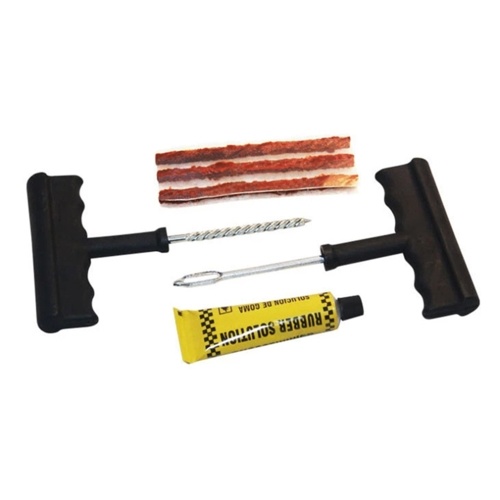 It is especially characteristic of steering axle tires, but can appear on all axles. If such wear has become visible to the naked eye, the problem is obvious. Balancing will correct the situation, but only partially: a wheel that has lost its roundness will wear out more intensively. Therefore, it is more expensive to ignore balancing when buying and installing new tires. Repeated wear spots around the circumference of the tires can cause suspension failure (arms, dampers, springs). After diagnosing and repairing the suspension, the tire must be replaced, since this wear pattern no longer ensures its uniform rotation, and the wheel will “beat”.
It is especially characteristic of steering axle tires, but can appear on all axles. If such wear has become visible to the naked eye, the problem is obvious. Balancing will correct the situation, but only partially: a wheel that has lost its roundness will wear out more intensively. Therefore, it is more expensive to ignore balancing when buying and installing new tires. Repeated wear spots around the circumference of the tires can cause suspension failure (arms, dampers, springs). After diagnosing and repairing the suspension, the tire must be replaced, since this wear pattern no longer ensures its uniform rotation, and the wheel will “beat”.
Spot wear
Spot wear in one spot is the result of emergency braking with a locked wheel. The uniformity of rotation of the wheel in this case is also broken and the tire will have to be replaced. If you leave the car for a long time in the parking lot, then there is a risk of flat areas on the tires, which then during the movement will cause the wheels to vibrate. It is recommended to increase the pressure in the tires if you leave the car for a long time. A similar effect can also be caused by stopping the car after intense sports driving - heated tires are easily deformed at the points of contact with the road surface and practically “freeze” in this state. This defect is easy to fix - after warming up the tires, they will again acquire a round shape.
It is recommended to increase the pressure in the tires if you leave the car for a long time. A similar effect can also be caused by stopping the car after intense sports driving - heated tires are easily deformed at the points of contact with the road surface and practically “freeze” in this state. This defect is easy to fix - after warming up the tires, they will again acquire a round shape.
Comb (saw) wear (possible reduction in mileage from 10% to 20%) is a form of uneven wear. It can often be seen on drive axle tires with a block tread pattern. It is caused by the fact that during the movement the tire is deformed - at the point of contact with the road, the tread is pressed inward (the blocks are crushed and dragged along the road surface), and as the wheel rotates, it straightens again. This leads to the fact that the tread wears more on the front edge than on the back. The result of this wear is an increase in tire rolling noise.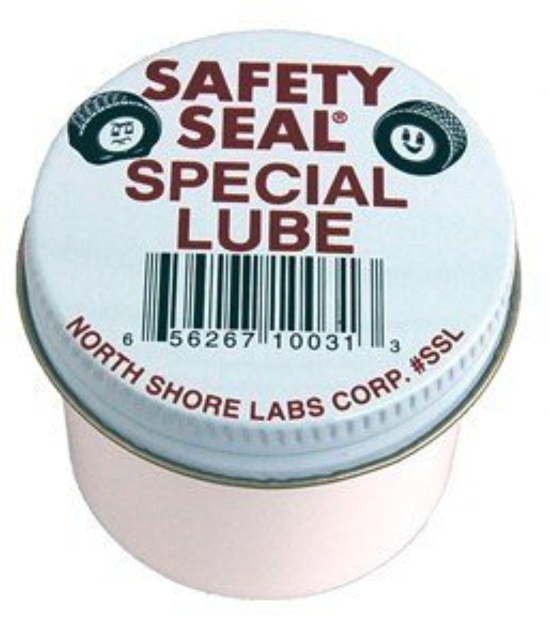 It is impossible to avoid the appearance of comb wear, but with the help of permutations, its negative effect on tire mileage can be leveled. Drivers can also influence the situation: if you step on the gas pedal as smoothly as possible, comb wear will be minimal. To even out this wear, tires are usually swapped, as tires on a non-drive axle are more susceptible to this wear. Low tire pressure also increases sawtooth wear.
It is impossible to avoid the appearance of comb wear, but with the help of permutations, its negative effect on tire mileage can be leveled. Drivers can also influence the situation: if you step on the gas pedal as smoothly as possible, comb wear will be minimal. To even out this wear, tires are usually swapped, as tires on a non-drive axle are more susceptible to this wear. Low tire pressure also increases sawtooth wear.
Driving with the wrong tire pressure
Insufficient tire pressure causes the tire to flex in the middle and wear out at the edges as a result. Excessive pressure in the tire leads to the opposite effect - its middle part wears out. It is authentically known that it is impossible to create an ideal tire. If you make it economical, it will be too rigid and unsafe. Conversely, a soft, durable tire with good grip will inevitably have increased rolling resistance. Manufacturers strive to find the best solution, but in any case it will be a compromise between durability, reliability, safety and economy.